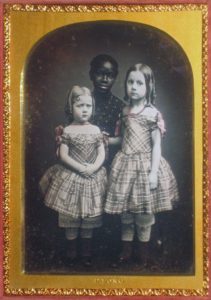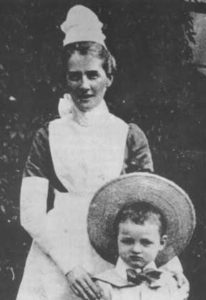The existence of the ‘nanny’ is not a new concept. It translates across centuries and cultures. Nanny, Nounou, Baba, Baomu, Daee, and Ninera are all words that encompass the profession. Although the first use of the English word “nanny” wasn’t seen until the 18th century, the job is likely as old as humanity itself—before we had the language to properly identify their crucial place in society.
Here’s a quick snapshot of a few pivotal moments in the long history of the nanny profession:
1700s:
 The first documentation of the nanny being separate from ‘nursemaids.’ The role reported to the ‘lady of the house.’ Nannies would assist the maids of the house in the general housekeeping but were also educated and would act as tutors until the children were school-aged. This is a time when women were not allowed to work, so there was no formal pay. However, compensation came in the form of food and a place to stay, making the work appealing to many unmarried young women who wanted to live independently.
The first documentation of the nanny being separate from ‘nursemaids.’ The role reported to the ‘lady of the house.’ Nannies would assist the maids of the house in the general housekeeping but were also educated and would act as tutors until the children were school-aged. This is a time when women were not allowed to work, so there was no formal pay. However, compensation came in the form of food and a place to stay, making the work appealing to many unmarried young women who wanted to live independently.
There is also no denying that the profession is also deeply intertwined with the practice of slavery. Conditions and treatment of women of color in the profession ranged drastically. They often faced abuse in order to protect their own family members. By the time most enslaved children reached the age of 7 or 8, they were assigned to taking care of the owner’s young children.
As with most beginnings, there was only remove for improvement.
1800s:
 The century where the population gets its jump-start during the Industrial Revolution. Thanks to decreasing death rates, the global population hit the 1 billion mark in the 1800s and just kept skyrocketing from there.
The century where the population gets its jump-start during the Industrial Revolution. Thanks to decreasing death rates, the global population hit the 1 billion mark in the 1800s and just kept skyrocketing from there.
Because of the swell in population numbers, the Victorian age kicked the profession up a notch. Nannies started to be viewed as senior positions within the household and would often have a staff “nursery maids” that were more hands-on with the children. Traditional nanny agencies started to form, giving nannies the ability to begin to organize and offering parents a clear way to hire.
1900s:
Over the next century the profession started to come out of the shadows. Most notably, women start getting paid for their work! In 1985, the International Nanny Association formed, acting as an umbrella organization for the in-home child care industry. But we also start to get detailed stories of the impact these women had on families and on history. Stories like:
- Elizabeth Ann Everest – Winston Churchill’s beloved nanny. The impact she had on his life was clear. Famous history writer, Stephen Mansfield, wrote the following: “So it was that when the man some called the ‘Greatest Man of the Age,’ lay dying in 1965 at the age of ninety, there was but one picture that stood at his bedside. It was the picture of his beloved nanny, gone to be with her Lord some seventy years before. She had understood him, she had prayed him to his best, and she had fueled the faith that fed the destiny of nations.”
- Baroness Maria von Trapp – Her real-life story inspired a musical, books, and a film. While the musical we remember is more of a love story between the governess and a Captain von Trapp, the real Maria’s heart was really with the kids. In her autobiography, she wrote: “I really and truly was not in love. I liked him but didn’t love him. However, I loved the children, so in a way I really married the children. I learned to love him more than I have ever loved before or after.“
- Tiggy Legge-Bourke – Nanny to Prince William and Harry. She was a stabilizing presence for them after the tragic death of their mother, Princess Diana. Tiggy was in attendance at the most recent royal wedding between Prince Harry and Meagan Markle and signs point to her being the godmother to their new son Archie.
High-status women started to gain notoriety for the profession with names and stories of their own, which has a lasting impact. Personal stories from women of color in this time are rare, but when one is available, it’s worth every minute to read.
2000s:
Although respect for the profession has come a long way, there is still a very long way to go. The modern nannying job is as complex as ever. While celebrity and royal nannies have gained a new level of status and notoriety, the every day nanny (often women of color) is struggling to gain footing in a world where the profession is still undervalued.
Today, women like Alene Mathurin are working to change that. Her organization, The Nanny Circle, focuses on bringing the nanny community together and giving them the tools and training to advocate for themselves and the profession as a whole.

As the population continues to rise globally, the need for the profession will only continue to expand. Shifts in household dynamics also solidify the need. The number of families with two working parents has doubled since the 1970s.
Which brings us to this…
Take a moment to stop and think about what would happen if the role of the nanny did not exist. It’s almost impossible to imagine. The function is inextricably linked to humanity. A lot has changed since 1785, the year the word “nanny” was first recorded, but the core function of the role hasn’t changed. Child rearing has never been and will never be a solo adventure.
In today’s world it’s a feat for a profession to span a decade, let alone centuries and centuries. Nannying is a time-honored profession that deserves to be placed on a pedestal.



